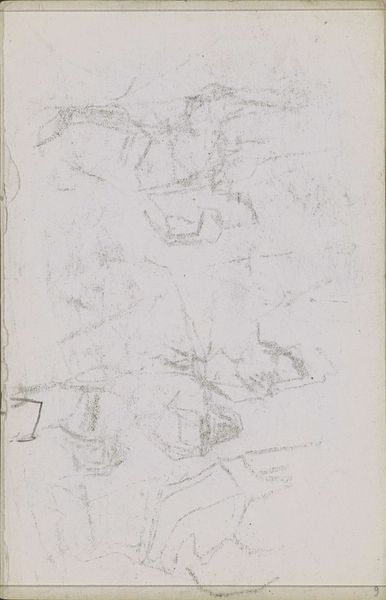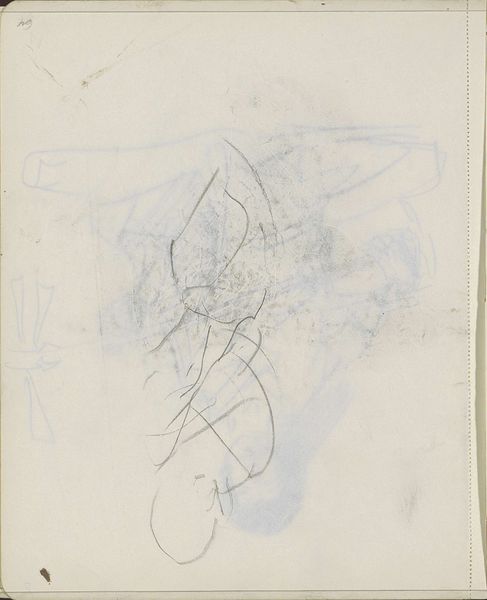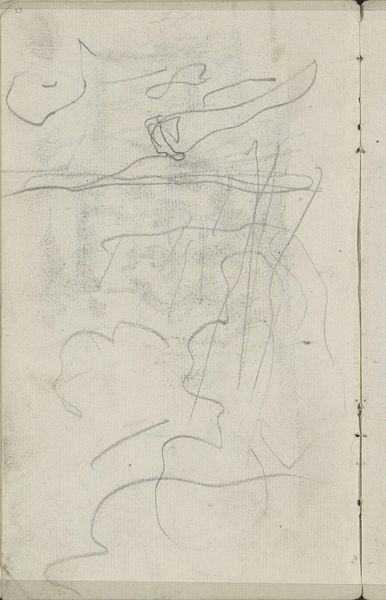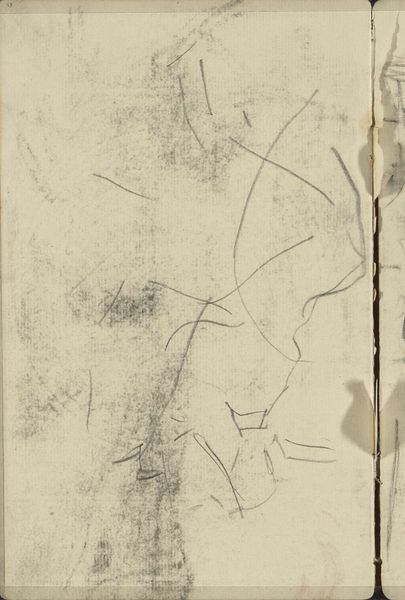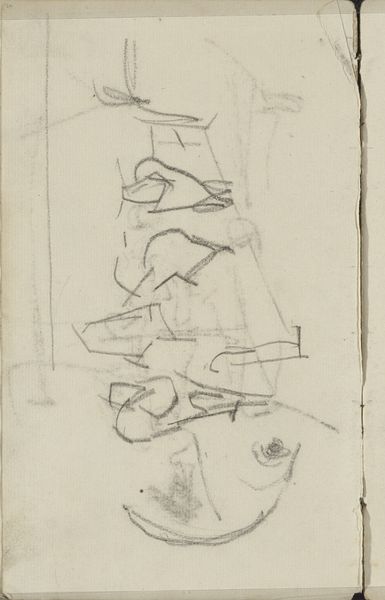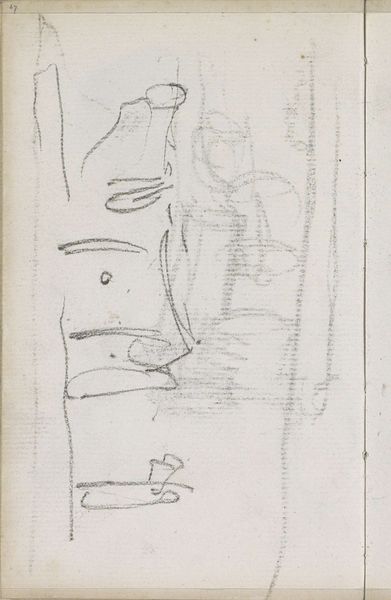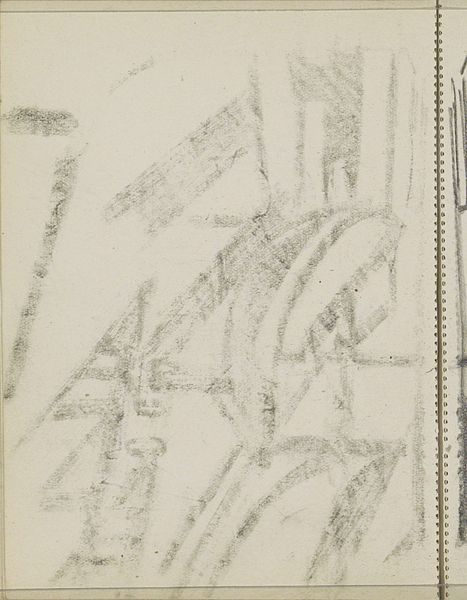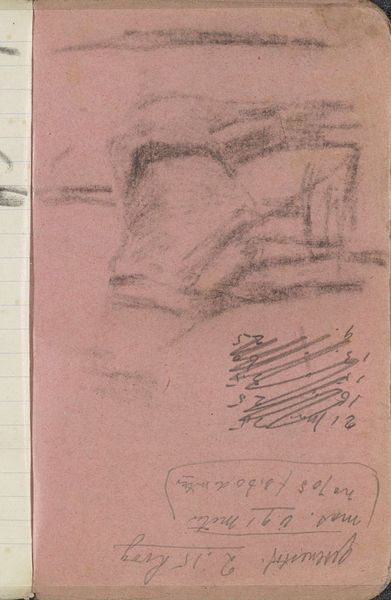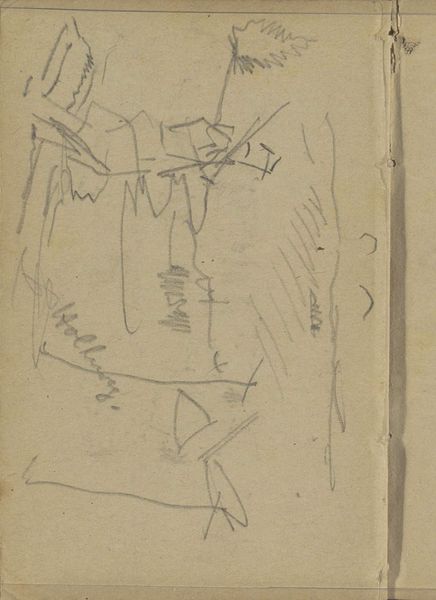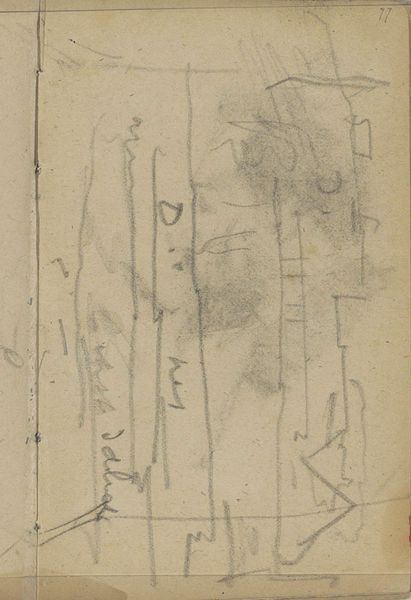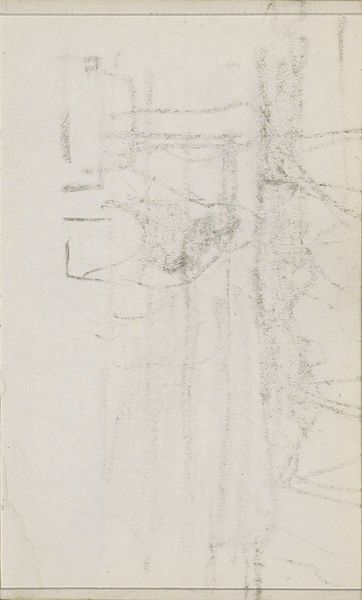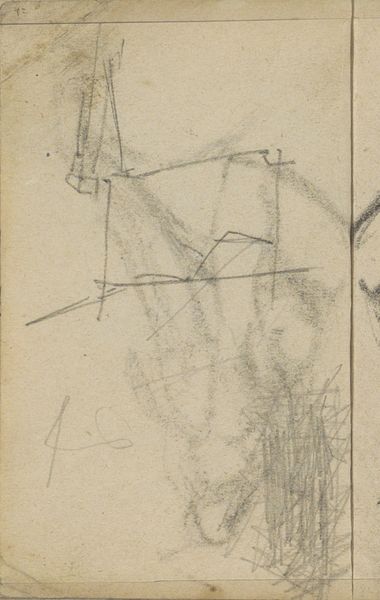
drawing, paper, pencil
#
drawing
#
paper
#
geometric
#
pencil
#
abstraction
#
line
Copyright: Rijks Museum: Open Domain
Curator: We're looking at "Studie," a pencil on paper drawing by Carel Adolph Lion Cachet, created around 1895, held at the Rijksmuseum. What's your first reaction to this one? Editor: Chaotic, almost. A network of lines and vague shapes struggling to coalesce on the page. There's a definite lack of a focal point. Is it supposed to be this unresolved? Curator: As a 'studie,' I think the open-ended nature is exactly the point. Cachet uses these forms, particularly the recurring curves, as a sort of visual language. They may represent stylized waves, clouds, or simply the ebb and flow of creativity itself. Editor: So, it's less about recognizable forms and more about the relationships between them. The stark contrast of the diagonal lines cutting across these more organic shapes creates visual tension. Does the visual contrast suggest anything beyond composition? Curator: I read it as a microcosm of the world—the constant tension between natural forms and imposed order. The geometric lines could represent the human desire to structure and control, while the softer, curved elements embody the more yielding aspects of the natural world. It’s a timeless struggle made visual. Editor: Interesting, and if we look at it through that lens, perhaps those curves also act as vessels or containers for emotion, versus the austerity of a straight line representing intellect or reason? Curator: Precisely! Cachet leaves it open to interpretation, which is precisely its enduring quality. A visual poem composed of shapes. The simplicity of pencil on paper forces a distilled and uncluttered view of these oppositional forces. Editor: It’s certainly intriguing how such a minimal piece can provoke such a multifaceted interpretation. It highlights that unfinished quality we discussed. I now feel it not as chaotic, but nascent with creative potential. Curator: It gives you insight into an artist's process, the very foundation of his artistic expression, capturing the fleeting thoughts and ideas before they take shape. Editor: Exactly. An invitation to delve into the mind of the artist, rather than simply observe a finished product. It's a valuable lesson in seeing potential rather than demanding resolution.
Comments
No comments
Be the first to comment and join the conversation on the ultimate creative platform.

